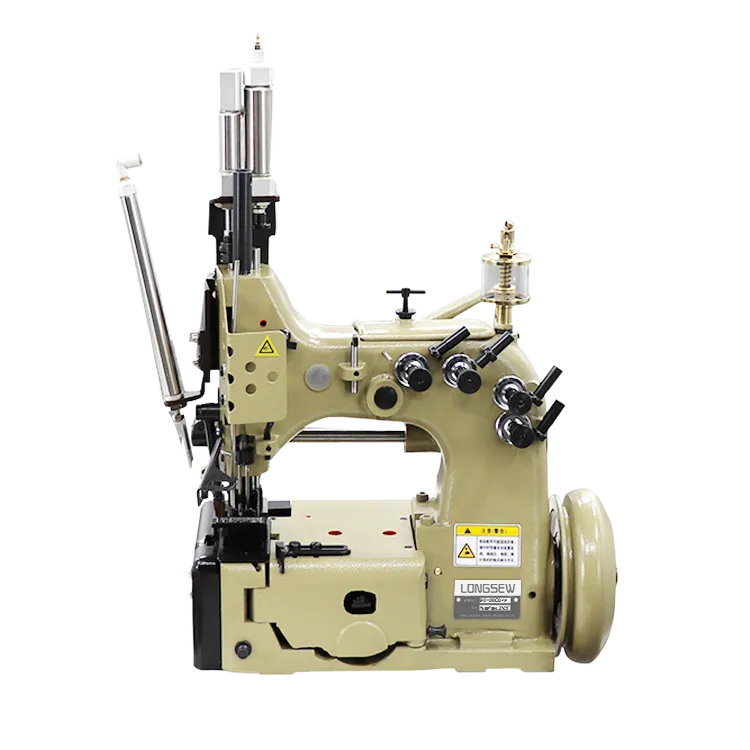what is a lock stitch machine
What is a Lock Stitch Machine?
In the world of sewing, the lock stitch machine stands out as one of the most fundamental tools used by both amateur and professional tailors. The lock stitch is characterized by its unique stitching mechanism, providing strength and durability, making it ideal for a variety of fabrics. But what exactly is a lock stitch machine, and how does it operate? Let’s explore the components, functionality, and applications of this essential piece of equipment.
Understanding the Mechanism
A lock stitch machine primarily comprises two main threads the needle thread and the bobbin thread. The needle thread is fed from the top, while the bobbin thread is housed underneath the machine. These two threads interlock to produce a single line of stitching on the fabric. The coordinated movement of the needle and the bobbin creates a secure stitch, which is both strong and flexible, allowing the seams to withstand tension during wear.
The process starts when the needle pierces the fabric and draws the needle thread down into the bobbin case. The hook mechanism then catches the needle thread, forming a loop that wraps around the bobbin thread. When the needle rises, this interlocking formation creates a lock stitch at the fabric's surface. The operation is impressively swift, making it suitable for high-volume sewing tasks.
Types of Lock Stitch Machines
Lock stitch machines come in various types, including industrial sewing machines and home sewing machines. Industrial machines are often more robust and designed for high-speed production environments. They feature heavy-duty components that allow them to handle thicker materials such as denim or canvas, often used in apparel manufacturing or automotive upholstery.
Home sewing machines, on the other hand, tend to be more versatile with an array of features suitable for crafting, mending, and quilting. Many home models offer multiple stitch types, but the lock stitch remains the primary option due to its reliability.
what is a lock stitch machine

Another variation is the lock stitch machine with a walking foot, which helps feed multiple layers of fabric evenly, reducing the chances of slipping
. This feature is especially beneficial for quilting and projects involving thick or slippery materials.Applications of Lock Stitch Machines
Lock stitch machines are widely used in a range of industries. In fashion design, they are essential for constructing garments, allowing tailors to create strong seams and intricate designs with precision. Beyond apparel, lock stitch machines are also employed in textile production, upholstery work, and leather crafting.
One of the advantages of lock stitches is their capacity to create flat seams, which is significant for comfort and aesthetics. This is vital in industries like athletic wear, where seam placement can affect both performance and user experience.
In addition, the lock stitch is often favored for its ability to produce finished edges. When combined with overlock stitches, completing hems and seams becomes a more efficient process, essential for large-scale manufacturing.
Conclusion
In conclusion, the lock stitch machine is an invaluable tool in the sewing industry, known for its simplicity, strength, and versatility. Whether in an industrial setting or a home workspace, its ability to create high-quality stitches has made it a staple for various sewing applications. Understanding how the lock stitch machine operates allows sewists to leverage its capabilities effectively, whether they are creating custom garments or producing large quantities of products. As sewing technology continues to evolve, the lock stitch machine remains a cornerstone, embodying the blend of tradition and innovation in the fabric of our lives.
-
Boost Production Efficiency with a Pattern Sewing MachineNewsAug.29,2025
-
Industrial Excellence with the Best Heavy Duty Sewing MachineNewsAug.29,2025
-
Precision and Power with the Best Pattern Sewing MachineNewsAug.29,2025
-
Reliable Bulk Packaging Starts With the Right FIBC Sewing MachineNewsAug.29,2025
-
Advanced Packaging Solutions: Elevate Productivity with Jumbo Bag Sewing Machine and Industrial Stitching EquipmentNewsAug.29,2025
-
High-Performance Solutions for Bulk Packaging: FIBC Sewing Machine and MoreNewsAug.29,2025
-
Maximize Efficiency with an Industrial Cylinder Arm Sewing MachineNewsAug.28,2025


























